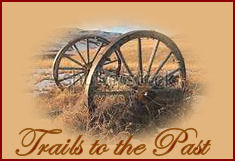Author: Frank W. Johnson
Edited & Brought to Date by Eugene C. Barker, Ph. D
With Assistance of Ernest William Winkler, M. A.
Published By The American Historical Society
1890
Transcribed by: Charlie Vines

Brig.-Gen. John L. Clem. After more than half a century of practical and continuous service as a soldier, John Lincoln Clem was retired from the United States Army in 1915 with the rank of brigadier-general. Before his retirement he had been stationed at Washington in the capacity of assistant quartermaster general, and enjoyed the distinction of being the only active officer of the regular army who had served as a soldier in the Civil war. He was thus the last of those gallant veterans of the Union who continued their active service for more than half a century.
General Clem, who has long been well known in Texas, and particularly at San Antonio where he was for a number of years stationed at Fort Sam Houston, and where he has a son in business, is without doubt one of the remarkable characters of American history. Lossing, the great historian of the Civil war, says: “Little Johnny Clem was the youngest soldier who ever bore arms in battle.”
He was born at Newark, Ohio, August 13, 1851, and as he was not yet sixty-five years of age at retirement there remains only the tender years of childhood when he was not engaging his time in the duties and responsibilities of military life. His father, Roman Clem, was a native of Alsace. General Clem was not quite ten years of age when President Lincoln called for volunteers at the beginning of the war. Having already shown evidence that he was a born soldier, it became his greatest ambition at the beginning of the war to don a suit of blue and go to the front. He was rejected several times by the recruiting sergeant when he presented himself for enlistment, but after five or six unsuccessful attempts to break into the army as a little lad his services as a drummer boy were finally accepted by the colonel commanding the “Fighting Twenty-second” Michigan Infantry. That was in May, 1862, while the regiment was at Covington, Kentucky.
He was in the whirl of death at the awful battle of Shiloh, and the “rat-ta-ta-tat” of his drum could be heard mingling with the furious cannonading and incessant musketry fire. It was in this fearful fight that he received his real initiation into soldier life, his baptism of fire. The drum he carried was smashed to pieces by a Confederate shell, and the boy was knocked down by the force of the explosion, while his escape from death was regarded by men on the firing line as miraculous. His bravery and coolness on this field swept by a veritable cyclone of shot and shell gained for him his first army appellation “Johnny Shiloh.” At Chickamauga, where the hornets of death were busy with their sting, Johnny Clem again demonstrated the sort of stuff he was made of, and in the face of fiery blasts showed himself to be a hero. The attention of both General Rosecrans and General Thomas was attracted to his courageous performances, and these distinguished officers bestowed upon him the affectionate title of “The Little Drummer Boy of Chickamauga.” Throughout the Army of the Cumberland the lad was lauded by officers and enlisted men for his patriotic spunk and devotion to every duty.
He received his first promotion soon after he had reached the age of twelve years. Appreciating the fact that in Johnny Clem, although diminutive in size, he had a real soldier, the commanding officer 0f the Twenty-second Michigan detailed him as a “marker,” an assignment of much importance in war times. He was provided with a musket, its barrel being shortened to the boy’s size, in which he carried his little marker flag. This distinction filled his boyish mind with pride. On occasions when the army was moving to the front he rode on a caisson until it was time for him to take his place in the firing line as marker with his shortened musket, which could “really shoot,” but which bore the appearance of a toy gun in the hands of a play soldier. But there was no play about Colonel Clem’s boyhood experience in the army. He was always at the front in the harvest of death, and big, brawny soldiers pointed him out as an example to be followed by older ones. It may be said that his early boyhood was entirely spent in the fray of battle.
A war-time incident which may be found on the pages of history will serve in a manner to illustrate the valor and coolness of the little drummer boy of the ’60s. After the battle of Chickamauga, when the Union army was retiring toward Chattanooga, the brigade to which Johnny Clem was attached was ordered to hold its position. The brigade gallantly charged, but was repulsed and surrounded by Confederates, yelling like demons and demanding the surrender of the Union forces. Johnny Clem, who had charged with the line, was unable to fall back as rapidly as the others, and was consequently far in the rear when a mounted Confederate colonel rode toward the little “marker” and demanded that he surrender. As the officer approached, Johnny Clem brought his short musket to “order arms,” the Confederate officer attempted to seize the boy and drew him to his saddle, but, quickly elevating his gun to the position of “charge bayonets” the wee marker pulled the trigger of his weapon and there was a blinding flash. The boy’s aim had been true and the colonel fell from his horse. Johnny then lay upon the ground and pretended to be wounded until darkness came, when he managed to find his command. He afterward learned, with gratification, that he had not killed the officer in gray, but had wounded him severely and that he lived for many years after the war.
Other incidents of the great struggle in which Johnny Clem figured, always as an irrepressible boy patriot, might be given. He participated in nearly every important engagement of the western campaign, and was in service until the war closed. He served at Perryville, Stone River, Resaca, Kenesaw Mountain, Peach Tree Creek, Atlanta and Nashville. At Chickamauga three musket balls passed through his cap, and on other fields of carnage he received two wounds. While carrying a dispatch from General Thomas to General Logan at Atlanta his pony was hit by a ball near the top of its head, killing it instantly and wounding the little rider. At the close of the war he was mustered out with honor.
He then began a course of study and endeavored to qualify himself for a cadetship at West Point, to which he had been appointed by General Grant on recommendation of Generals Thomas and Logan and other officers of the Army of the Cumberland. When examination time came, however, he found that he had been handicapped by serving as a soldier in his tender years while other boys of his age were attending school. The examination problems proved to be too much for his boyish mind and he failed to pass. Bitterly disappointed, but not discouraged, the youth went to Washington and obtained an audience with General Grant, who then had become president. Grant had seen the drummer boy under the fatal fire at Shiloh and had noted his brave bearing in the shambles of death at that battle. When the boy asked the President that further time he granted in which to complete the necessary studies, the great general replied: “We can beat that; I will make you a second lieutenant now.” The necessary order was given, and from that time the drummer boy has been a commissioned officer in the regular army, rising to the rank of colonel, and finally retiring with the rank of brigadier-general. He has seen service in many sections of the country and has been around the world. His first assignment after being commissioned second lieutenant was with the Twenty-fourth Infantry, then at Brownsville, Texas. The first ten years of his life as an officer was spent in Texas, where he displayed great activity in preserving order along the Rio Grande in the wild and riotous times of the early ’70s, in suppressing the outlawry of cattle thieves and quelling outbreaks among the Indians.
The people of Texas indeed hold General Clem in the warmest affection. Since his first Texas assignment he has been in Porto Rico, and after the Spanish-American war he was returned to Texas and stationed at Fort Sam Houston, San Antonio. He went from San Antonio to Manila, from there to San Francisco, then back to San Antonio again, and then to Chicago, and finally to Washington, District of Columbia, where he was serving at the time of his retirement. He is deservedly popular in military circles and among the Civil war veteran comrades of the Grand Army of the Republic and those of the Spanish-American war.
General Clem married Anita R. French, who died several years ago. She belonged to a Delaware family, and was a daughter of Maj.-Gen. William H. French of the United States regular army, who was stationed at San Antonio before the Civil war. General Clem married, September 23, 1903, Elizabeth Sullivan, daughter of Daniel Sullivan, of San Antonio, and they have one daughter, Elizabeth.
John L. Clem, Jr., a son of General Clem, is one of the energetic young business men of San Antonio, now a partner in the firm of Collins-Clem Company, dealers in Studebaker automobiles.
John L. Clem, Jr., was born at Fort Henry, Maryland, in 1885, and as a boy he lived in San Antonio with his father. He attended the West Texas Military Academy, and spent four years as a student in the University of the South at Sewanee, Tennessee. He is now one of the trustees of that fine old institution.
Mr. Clem was one of the organizers of the company that built the Gunter Hotel at San Antonio, and was secretary of the company for some time. Later he became auditor of the Gunter Hotel, resigning that position in the fall of 1914 to enter the automobile business. He is a member of the Delta Tau Delta fraternity. At San Antonio he married Miss Lillian E. Benton of that city, and they have two children: Lillian Anita and Eileen Clem.
| HOME | BIOGRAPHIES | RETURN
TO TYPES OF SUCCESSFUL MEN OF TEXAS MAIN PAGE |

